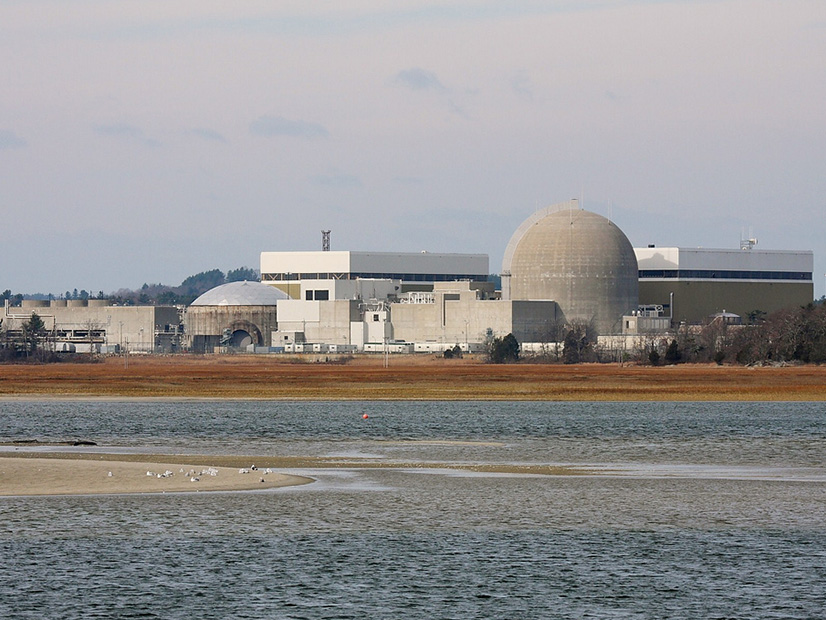
The D.C. Circuit Court of Appeals has affirmed FERC’s ruling that NextEra Energy is responsible for replacing the circuit breaker at its Seabrook Station nuclear plant to accommodate the interconnection of the New England Clean Energy Connect (NECEC) transmission line.
ISO-NE determined the circuit breaker at Seabrook, currently at 99.6% of its capacity, would be overloaded with the additional flow of power from Avangrid’s 1,200 MW NECEC project, which is under construction. (See Avangrid Details Progress on NECEC Tx Line.)
While FERC found Avangrid is responsible for the direct costs of upgrading the circuit breaker, it ruled Avangrid is not responsible for NextEra’s indirect costs of the replacement, including legal expenses and revenue lost during the replacement.
“We hold that the agency had statutory authority to require the upgrade, correctly interpreted the governing tariff and contract to require the upgrade, and permissibly denied compensation for its indirect costs,” Judge Gregory Katsas wrote in the court’s Oct. 4 ruling.
NextEra argued the circuit breaker is non-FERC jurisdictional because it exists to protect the generating facility, and so the commission doesn’t have the authority to require NextEra to make the upgrade (EL21-3, EL21-6). (See FERC Resolves NextEra-Avangrid Dispute over Seabrook Circuit Breaker.)
The court found the upgrade is FERC jurisdictional because “the upgrade directly affects the transmission of electricity in interstate commerce, an area where FERC may regulate.”
“If FERC could not order an upgrade in those circumstances, incumbent generators could unilaterally prevent competing sellers from joining the grid, which would directly — and substantially — limit how much electricity could be transmitted,” the court added.
The court also pointed to a previous ruling that backed FERC’s ability to “exercise jurisdiction over generation facilities to the extent necessary to regulate interstate transmission.”
Judge Neomi Rao authored a dissent to the majority ruling, arguing the language in the ISO-NE tariff does not require NextEra to replace the circuit breaker, and therefore the company should not be required to make the upgrade, regardless of the implications on interconnection in the region.
“The broader regulatory context and policy concerns cited by the majority may be relevant to FERC’s determinations when setting just and reasonable rates and practices. These considerations, however, are impermissible for the judicial task of identifying the plain meaning of existing tariffs and contracts,” Rao said. She added that FERC could initiate a Section 206 proceeding to amend the tariff if it deems changes to be necessary.
Rao also argued the majority opinion “reverts to a Chevron-like framework, insisting its interpretation is ‘textually permissible’ and consistent with regulatory goals.”
In response, Katsas wrote that the RTO’s interconnection procedures require NextEra to follow “good utility practice” to maintain the breaker and other devices needed to prevent short-circuiting on the grid, adding that the tariff does not grant NextEra “a unilateral right to veto Avangrid’s interconnection.”


